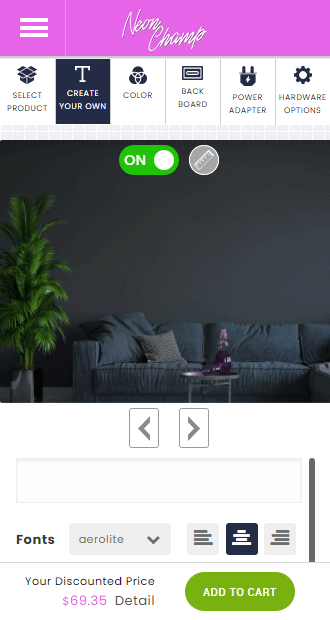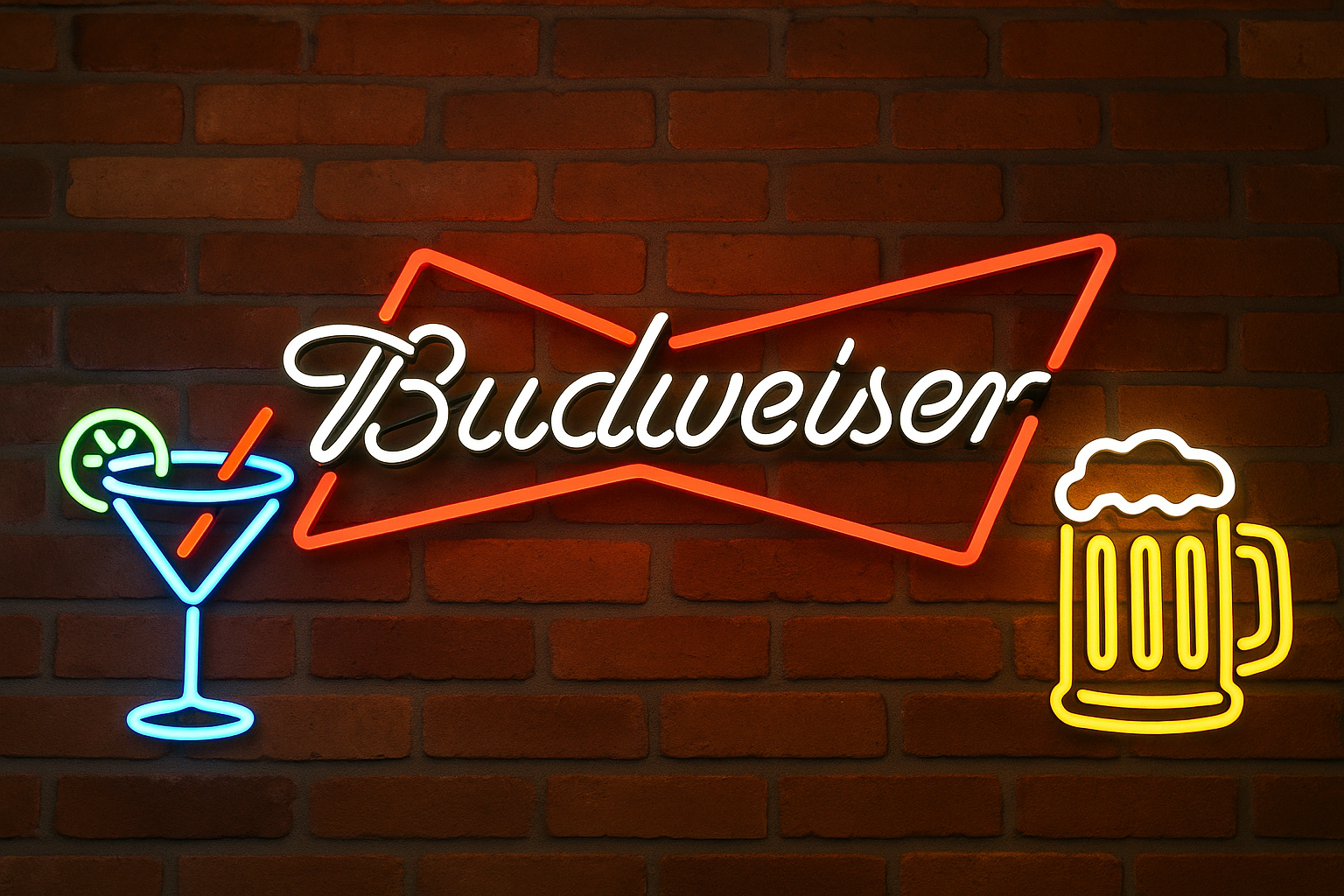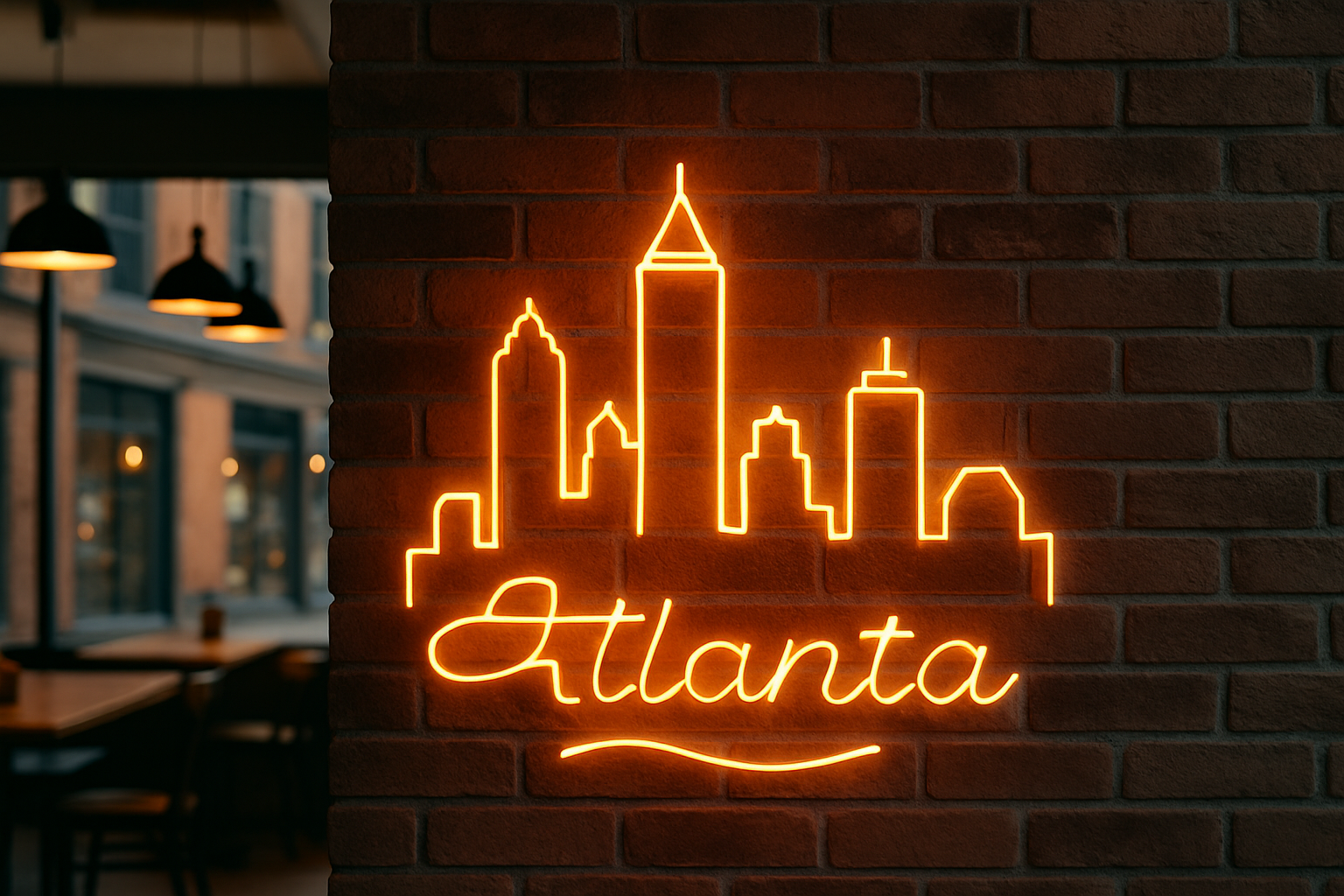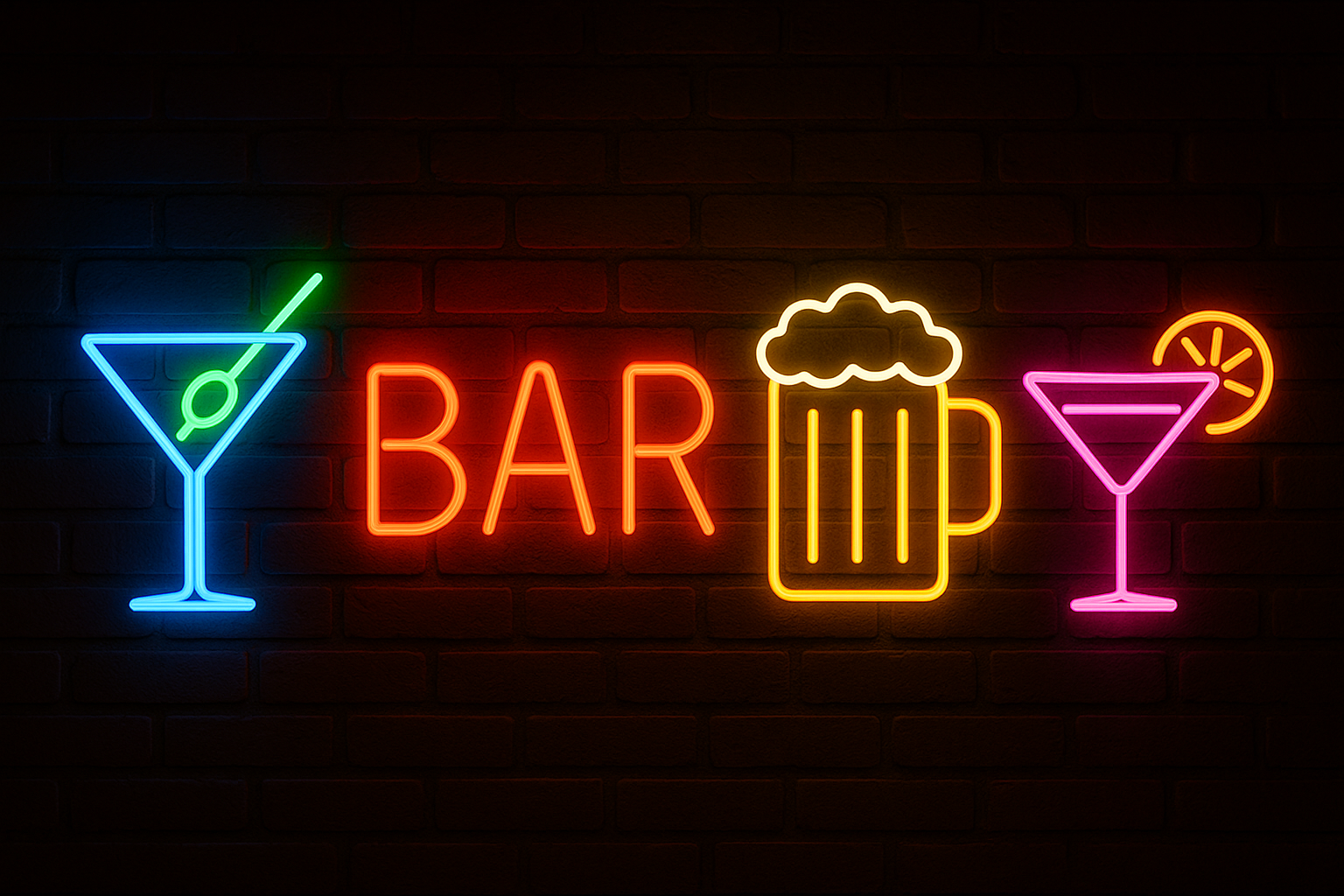Vintage Neon vs Modern LED Neon: What’s the Difference & Why It Matters

Glowing neon signs have fascinated people for over a century. From the early days of hand-bent glass tubes to today’s energy-efficient LED creations, neon has evolved without losing its charm. Understanding the difference between vintage neon signs and modern LED versions helps you appreciate both-the craftsmanship of the past and the creativity of today.
Who Discovered Neon and How It Lit Up the World
The story begins with who discovered neon. In 1898, British scientists William Ramsay and Morris Travers identified a new gas while studying the atmosphere. When this gas was placed in a vacuum tube and electrified, it emitted a red-orange glow unlike anything seen before.
That discovery sparked a new era of neon lighting, giving artists and engineers a medium to turn electricity into visual art. The first commercial neon sign appeared in Paris in 1910, and the trend quickly spread to the United States.
By the 1920s, the world was glowing with excitement. The combination of science, design, and imagination brought light to advertising, entertainment, and culture in ways that still influence modern design.
The Golden Era of Vintage Neon Signs
During the mid-20th century, vintage neon light signs dominated streets across cities like Las Vegas, Los Angeles, and New York. Every sign told a story, representing not just a brand but a part of local identity.
Here’s what made vintage signs neon so special:
- Handcrafted precision: Each tube was shaped by hand using intense heat and skill.
- Unique glow: Real neon gas created vivid colors and movement that no bulb could match.
- Durability: Properly maintained signs could last for decades.
- Cultural significance: They became visual landmarks and symbols of the nightlife era.
Collectors still treasure classics like the vintage bud light neon sign or the rare vintage neon beer signs from bars and breweries of the 1950s. Many of these pieces are now refurbished and listed as vintage neon signs for sale, keeping history alive for new generations.
Retro Neon Light Signs: When Art Met Identity
The beauty of retro neon light signs lies in their individuality. Each curve, flicker, and color gradient carried the artist’s personal touch. No two pieces were ever the same, which made every sign a one-of-a-kind display.
In the golden years of advertising, neon artists were seen as craftsmen rather than manufacturers. Their creations shaped how people experienced cities at night. These glowing forms turned simple storefronts into attractions.
Even today, restorers continue to preserve antique neon signs to protect that craftsmanship and nostalgia. The glowing curves of a retro diner sign or an old cinema marquee still captures the same emotion they did decades ago.
Modern Neon Light Signs and the LED Revolution
Technology transformed how we create light. Modern neon light signs use flexible LED strips instead of fragile glass tubes. They replicate the glow of gas-based neon while solving the limitations of the old method.
Here’s how modern LED neon and lights stand apart:
- Energy efficiency: LEDs consume up to 80% less power than traditional neon.
- Longer lifespan: LED strips last for tens of thousands of hours without fading.
- Safety: No gas, no high voltage, and no risk of breakage.
- Customization: You can choose from endless colors, fonts, and shapes.
- Lightweight design: Easy to mount and move between locations.
Brands, influencers, and homeowners now use LED designs for everything from decor to branding. A soul ties neon sign or custom wall display can now be made in any color or phrase, perfect for weddings, cafes, or gaming rooms.
Important Facts About Neon and Its Evolution
Here are some important facts about neon that explain its ongoing appeal:
- The name “neon” comes from the Greek word “neos,” meaning “new.”
- Real neon gas glows red orange, other colors come from different gases or fluorescent coatings.
- Traditional neon requires high voltage, while LEDs work with low voltage.
- True vintage neon tubes are hand-blown and filled with rare gases.
- LED versions use silicone or PVC tubing to imitate the look of glass.
These details show how the term “neon” has become broader over time. Whether it’s gas or LED, the goal remains the same-to create light that inspires emotion and creativity.
Interesting Information About Neon and Its Cultural Influence
Here’s some interesting information about neon you may not know:
- Cultural icons: Neon became part of pop culture through classic movies, music videos, and art.
- Restoration movement: Collectors and museums now rescue vintage neon signs from demolition to preserve history.
- Design inspiration: Modern designers use neon’s nostalgic glow to bring warmth to minimalist interiors.
- Digital adaptation: The neon look has inspired online aesthetics and filters across social media.
Modern LED signs let this heritage live on. They keep the same emotional warmth that vintage neon light signs carried, just with modern flexibility.
The Appeal of Vintage Neon Signs for Sale
There’s a growing market for vintage neon signs for sale because of their historical and decorative value. Buyers look for:
- Authenticity in gas tubes and hand-bent shapes.
- Restored pieces from bars, motels, and theaters.
- Rare branding designs like vintage bud Light neon sign or early vintage neon beer signs.
- Provenance or documentation of original usage.
Collectors see them as more than decor-they’re investments in design history. Antique stores and online platforms now feature a mix of fully restored and preserved originals that shine just as bright as they did decades ago.
Antique Neon Signs: The Art of Preservation
Maintaining antique neon signs is an art form. Restorers carefully replace broken tubes, rewire transformers, and clean decades of grime without altering the original design.
The process often includes:
- Examining old schematics or photos.
- Recreating gas mixtures to match original color tones.
- Refurbishing metal casings and protective glass.
- Using original fonts and artwork when possible.
This care keeps cultural history glowing-literally. Many antique restorations now appear in museums or themed restaurants that celebrate the golden age of signage.
Modern Neon Streamer and Social Trends
LED lighting has given rise to the neon streamer movement. Influencers, gamers, and event creators use custom LED neon for streaming backdrops, live events, and digital branding.
These signs blend style and visibility, creating vibrant atmospheres that look great on camera. LED flexibility allows creative layouts - curves, cursive fonts, or even animated lighting effects. It’s a digital-age twist on an old classic.
Why Both Vintage and Modern Neon Lights Matter
Both styles of neon lights deserve appreciation. Vintage designs show craftsmanship and cultural heritage. LED signs represent innovation and convenience. Together, they keep the art form alive.
- Vintage signs preserve artistry and authenticity.
- Modern LED versions offer versatility and safety.
- Both share a common goal-turning light into emotion.
Whether it’s a collectible antique neon sign or a newly designed LED piece, the glow continues to inspire across generations.
Final Thoughts
Neon has evolved, but its magic remains. From hand-crafted vintage neon light signs glowing above diners to sleek LED creations lighting modern studios, every version reflects creativity. Whether you’re collecting an antique neon sign or designing a new neon light sign for your wall, one thing is certain-the glow never loses its soul.













